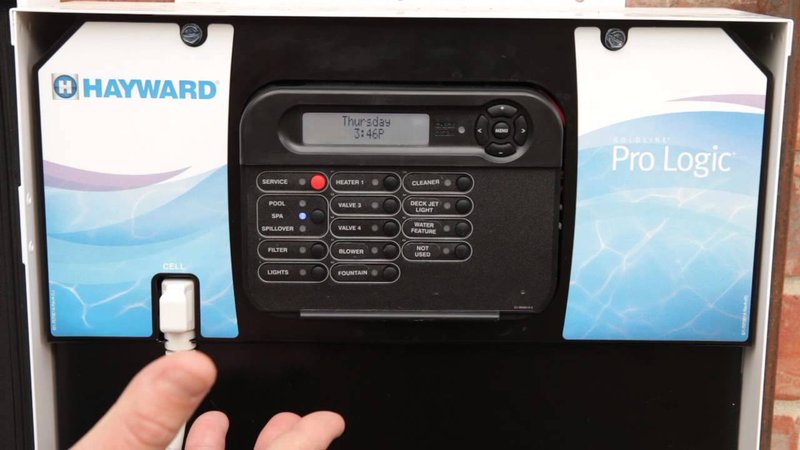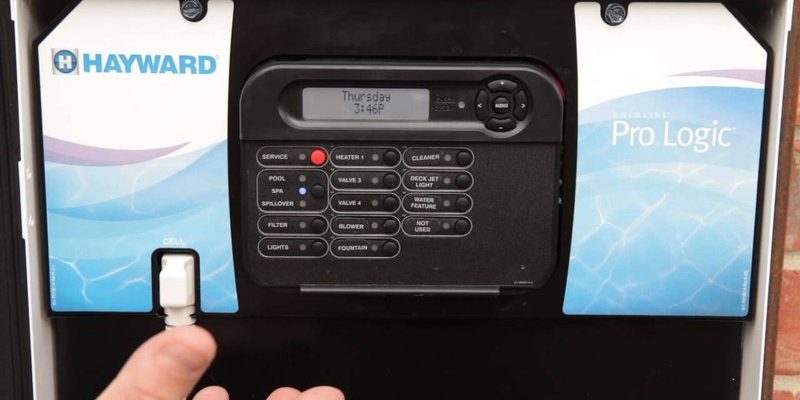
Here’s the thing—learning to set schedules with your Hayward pool remote system can seem a little intimidating at first. There are menus, codes, and buttons that don’t always make sense unless you’ve spent quality time with the manual (who does that?). But I promise, with a little patience and a clear step-by-step guide, you can take total control—whether you want to sync your pool heater for early morning laps or make sure the lights welcome you home at just the right moment. Let’s walk through everything you need to know about using your Hayward remote to manage your pool’s daily routines.
Understanding Your Hayward Pool Remote System
Before you even push a button, it helps to know what you’ve got in your hands. Hayward makes several types of pool remotes, but the most common ones are the *AquaPod* and the *ProLogic Wireless Remote*. These devices are designed to give you control over almost every aspect of your pool system—from pumps and heaters to lights and fountains.
Here’s the key: The Hayward remote doesn’t work as a universal remote. It’s made to pair specifically with Hayward pool automation systems. That means it won’t control non-Hayward devices or work for a neighbor’s pool if they’re using a different brand.
Pairing and syncing your remote with the main pool control panel is the first step (more on that below). The remote communicates wirelessly, using a secure radio signal, but it does depend on solid battery power to keep things running smoothly. If you ever notice the remote lagging or losing connection, a battery check is always a good place to start before diving into more complex troubleshooting.
Pairing and Syncing Your Remote With the Pool System
You might be wondering, “How do I actually get my Hayward remote talking to my pool equipment?” It’s a fair question, especially if you’re setting things up for the first time or after a battery change. Pairing is the process that lets your remote sync up with the main pool code on the control system—kind of like giving it the Wi-Fi password for your backyard.
To pair your Hayward pool remote:
- First, make sure the main pool control panel (inside your pool equipment box) is powered on and NOT in service or maintenance mode.
- On your remote, scroll to the “Settings” or “System Setup” menu—it may differ slightly depending on whether you have AquaPod or ProLogic.
- Select “Sync” or “Pair Remote” (again, the wording may vary).
- The control panel will display a pairing code on its screen. Enter this code on your remote.
- Wait for a confirmation signal—usually a beep or visual indicator.
If all goes well, your remote is now connected. If not, double-check that your panel isn’t locked, batteries are fresh, and you’re within range. A weak battery or interference can break the sync—so don’t be afraid to reset and try again.
Take your time here; pairing issues are super common. Move slowly, follow prompts, and don’t get discouraged if you need to reset once or twice.
Navigating to the Scheduling Features
So, you’re paired and ready. The next step is actually finding the scheduling features on your Hayward pool remote system. Sometimes, these menus feel like a maze—one wrong tap and you’re suddenly naming a spa instead of setting a timer. Here’s where a little patience and attention to detail pay off.
On most Hayward remotes, look for a button or touchscreen icon labeled “Timers,” “Schedules,” or sometimes “Programs.” Selecting this opens up a list of controllable devices—think pumps, heaters, lights, etc. Each device can usually have its own schedule, and you’re able to set things like exact start/stop times, days of the week, or custom cycles.
Quick tip: If you’re not sure which menu you’re in, back out and try again. It’s much better to start over than accidentally overwrite a setting you need. If you’re using a touchscreen model, the menus are pretty visual—icons for pumps, valves, and lights make navigation easier.
Honestly, the first time you try to program a schedule, it’s totally normal to fumble through a few menus. Don’t sweat it. Once you’ve found “Schedules,” the rest gets much easier.
Adding, Editing, and Deleting Schedules
Let’s get right into the practical steps. Say you want your pool pump to run from 7am to 10am, and your pool light to automatically turn on at dusk. Here’s how you set, edit, or delete schedules with your Hayward remote:
- From the Schedules menu, select the device you want to control (e.g., “Pool Pump”).
- Choose “Add New Schedule” or similar—this is where you enter the start and end time. Most remotes use a 24-hour clock, so double-check AM/PM if that’s your preference.
- Pick which days you want the schedule active. For daily use, select every day; for pool parties, maybe just weekends.
- Save or confirm your schedule. The remote should show a summary, so make sure it matches what you want.
- To edit, select an existing schedule and adjust the times or days. To delete, highlight the schedule and choose “Delete” or “Remove.”
You might notice an option for “Override” or “Manual On.” This lets you temporarily bypass the schedule in case you have people over and want the pump or lights to run longer (super handy).
These steps might look a little different depending on your exact Hayward remote model, but the logic is the same. If you get lost, remember: back out and start again. Patience is your best friend here.
Why Scheduling With Your Remote Matters
Look, life’s busy. No one wants to baby-sit pool settings every single day—especially when there’s a smarter way. Using your Hayward remote to automate schedules seriously pays off in convenience, savings, and peace of mind.
First off, scheduled pumps and heaters are more energy efficient. By setting timers for maintenance or cleaning cycles, you avoid running expensive equipment when it’s not needed. That means lower electricity bills (and frankly, fewer headaches when the monthly statement comes in). Plus, keeping your pump on a routine helps with water quality and reduces the need for emergency cleanups.
Second, scheduling makes your pool “party-ready” without last-minute scrambling. Lights can welcome guests at sunset, heaters can bring water up to the perfect temperature for your early-morning swim, and fountains can make your backyard feel extra inviting. No more running out in your pajamas to hit the switch—your schedule just works.
Finally, if you ever leave town or get busy with work, automated schedules give you confidence that your pool’s not being neglected. The Hayward pool remote system is like a trusted assistant who never takes a break.
Troubleshooting Common Scheduling Issues
Of course, even the smartest system has its quirks. Maybe your scheduled cycle doesn’t kick in, or your remote just seems unresponsive. Don’t panic—here’s how most folks solve these hiccups with Hayward pool remotes.
Try these steps if your schedules aren’t working:
- Check the battery: Weak battery power in your remote can cause settings to fail or not update properly.
- Re-sync the remote: Sometimes the connection drops, especially after a reset or if you’ve replaced batteries. Go through the pairing steps again.
- Review the schedule settings: Double-check start/stop times and make sure they’re actually enabled for the correct days.
- Confirm the equipment is online: If your pool panel is in service or manual mode, scheduled programs won’t run. Set it to “Auto” mode.
- Look for interference: Wireless remotes sometimes lose connection if there’s too much metal or electronics nearby—try moving closer to the equipment panel.
Still stuck? A full reset of the remote (check the manual for exact steps) can clear up stubborn glitches. Don’t forget, sometimes the best move is to turn everything off, wait a minute, and then power back up—just like with any other smart device.
Comparing Hayward Remote Scheduling to Other Options
You might be wondering if it’s worth sticking with the Hayward system or if a universal remote or app would make things easier. There’s no one-size-fits-all answer, but here’s the scoop as I see it:
Hayward remotes have the advantage of seamless integration. They’re specifically coded to sync, pair, and control every feature of your Hayward pool system. You won’t run into compatibility issues or limited features. But honestly, the menus can be a bit quirky at first, and you need to keep batteries fresh.
Universal pool remotes exist, but in real life, they rarely play nicely with all the features of a branded system. You might get basic pump or light control, but scheduling, heater codes, or advanced options are usually missing. If you want true “set and forget” scheduling, brand-matched remotes like Hayward’s are vastly more reliable.
App-based controls are becoming more common, too. If your Hayward system supports the OmniLogic app, you can handle scheduling right from your phone—no batteries to worry about and software updates keep things fresh. But setting up Wi-Fi and fixing connection hiccups can be trickier than old-school remotes.
Bottom line: If you want the deepest scheduling options and the least amount of troubleshooting, stick with your Hayward pool remote system—or use the app, if your setup allows.
Tips for Making the Most of Your Hayward Pool Remote
Once you’ve got the basics down, here are a few suggestions to level up your pool routine with scheduling:
- Start simple: Only schedule what you actually use—like pumps and lights—before moving on to fancier settings.
- Use daylight cycles: Set your lights to turn on just before sunset. Most Hayward systems let you sync with sunset times for a little extra magic.
- Plan for cleaning: If you have an automatic cleaner, schedule it to run right after the pump. Just be sure cycles don’t overlap and strain the system.
- Test changes: After creating a new schedule, watch to make sure everything turns on/off as expected. Sometimes a quick double-check saves a lot of hassle later.
- Keep your manual handy: Even if it lives in the “junk drawer,” you’ll thank yourself when you need the reset or troubleshooting codes.
With a little practice, you’ll find yourself making quick tweaks as the seasons change—maybe swapping a pump cycle for fall leaves, or adding extra filtration during summer heatwaves.
Wrapping Up: Taking Control of Your Pool Time
Setting schedules with your Hayward pool remote system is a little like setting your morning alarm clock—awkward the first time, but effortless once you know what you’re doing. The more you use it, the more you’ll see just how much time—and sanity—it saves. From syncing your first code, to troubleshooting battery quirks, to that satisfying moment when your lights flip on exactly as planned, you’re in full command of your pool’s daily life.
So, grab your remote, take it slow, and start small. With a few tries, you’ll go from “How do I do this?” to “Wow, my pool basically runs itself.” That’s the real magic of scheduling with Hayward.
